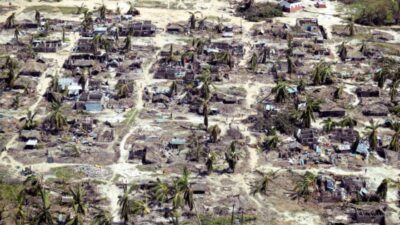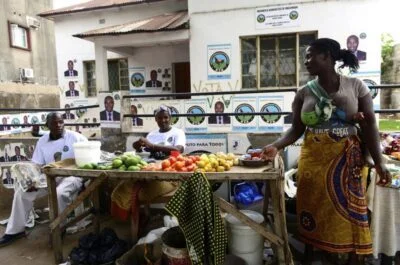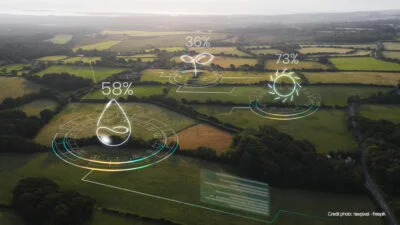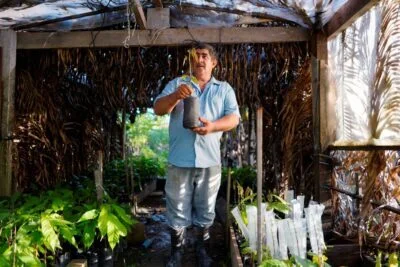Opinion: Civic engagement, innovation needed in disaster-recovery and reconstruction process
The world is experiencing an unprecedented spate of extreme weather and climate events, including wildfires, floods, typhoons, cyclones, and prolonged droughts. According to the report of the U.N. secretary-general’s High-Level Panel of Eminent Persons on the Post-2015 Development Agenda: “Losses from natural disasters — including drought, floods and storms — have increased at an alarming rate. People living in poverty will suffer first and worst from climate change. The cost of taking action now will be much less than the cost of dealing with the consequences later.”
Earlier this year, Mozambique, Malawi, and Zimbabwe suffered one of the worst natural disasters in the history of the southern Africa region. Then within a month, Mozambique was hit by a second storm, Tropical Cyclone Kenneth. These events affected more than 3 million people, claimed more than 1,000 lives, and destroyed hundreds of thousands of hectares of crops as well as public and private infrastructure.
According to the “Mozambique Cyclone Idai Post Disaster Needs Assessment” report, the combined costs of damage and loss were around $2.8 billion. These costs alone make up 7.5% of the $40 billion in total global losses from natural catastrophes recorded in 2019 thus far.
The report also estimates that $3.2 billion is needed for the recovery process in seven provinces affected by the tropical cyclones. With a locked negotiation between higher- and lower-income countries on the issue of legal liability for financial compensation of loss and damage during the U.N. Climate Change Conference in Madrid, vulnerable countries such as Mozambique will have to endure the challenges of climate change for many more years.
Lower- and middle-income countries often depend on international relief efforts to respond to natural disasters of the magnitude and intensity of tropical cyclones Idai and Kenneth. Therefore, the government of Mozambique created a cabinet for disaster reconstruction to coordinate efforts and mobilize resources at national and international levels.
The international community and donors committed to providing $1.2 billion, or 37.5% of the recovery needs. However, with a funding gap of around 60%, the reconstruction and recovery process seems far from being completed within the five-year timeline.
With the rainy season approaching, Mozambique’s contingency plan for 2019-2020 estimates that $33 million will be needed to assist the 1.6 million people living in the flood-risk and other vulnerable zones. So far, the government has secured a little more than half of the total funding required. The $18.8 million deficit poses a major challenge for the government at a time when people affected by cyclones Idai and Kenneth are still receiving humanitarian assistance.
Financial Tracking Service shows that from 2014 to 2018, an average of roughly 40% of the humanitarian aid funds appealed for worldwide, including those for disaster relief, were not supplied; this figure reached 41.5% in 2019. Given the increasing numbers of extreme events recorded each year and the uncertainties in the global economy, the disaster-recovery funding gap is likely to continue widening, and poor nations will continue to face enormous challenges to effectively supporting and financing the process.
Subscribe to Newswire
A comprehensive look at the day’s top global development breaking news, analysis, and opinion
Although there is a call for a global consciousness about climate change, there is also a need for broader country-level civil engagement in the post-disaster relief and recovery processes. Mozambique has proven that civic engagement and volunteerism can make a difference in the aftermath of a natural disaster. Citizens organized in groups across the country were able to quickly mobilize tons of basic goods and aid for thousands of affected people.
Despite these efforts, the initiative lacked the coordination to effectively ensure the allocation of goods and services for those most affected. When exploring regions or areas where this has been done effectively, no examples from LMICs were substantial enough to make the case of a broader engagement. However, experiences from countries such as the United States have suggested that meaningful civic engagement and innovation could help to address the long-term community challenges in a post-disaster recovery process.
For example, following Hurricane Harvey in Houston, the city’s Housing and Community Development Department partnered with local authorities, community organizations, neighborhood committees, and private groups to assess the recovery needs and priorities in the affected areas. The involvement of civil groups not only allowed for effective spending of resources, but also created a space for discussion and the opportunity to prioritize and rebuild critical infrastructure.
Civic engagement is the key ingredient to success in tackling issues that have an enormous impact on society. Developing countries have not yet capitalized on the potential of civic engagement to proactively address disasters and their aftermaths.
The response and strategies used to deal with disasters have been centered on government resources and on external donors as financing mechanisms. While acknowledging the government’s role as a lead actor in the recovery process, these strategies must also create incentives to engage individual citizens and private groups or associations with similar interests.
In addition, leveraging inclusive citizen engagement could lead to a greater social network of creativity and innovation and to the adoption of ideas and solutions for mitigating the common problems of disaster recovery and reconstruction. This could increase resilience and perhaps help in crafting of policy priorities to mitigate the funding gap that hinders the natural disaster recovery process, particularly in the most vulnerable areas. Therefore, policymakers and leaders in developing nations should take this opportunity to engage civil groups, addressing joint solutions to tackle climate change and the associated financial burden.







